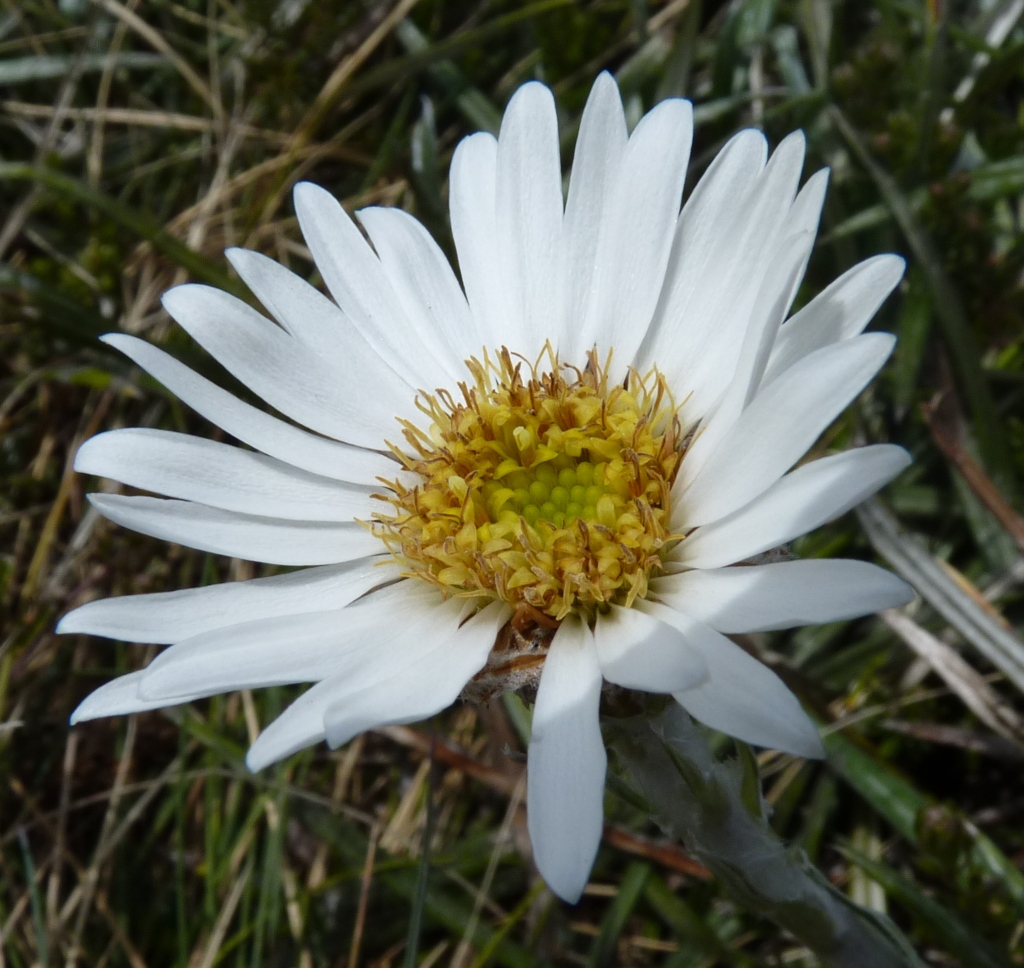Celmisia costiniana
M.Gray & GivenRootstock woody, branched, creeping and rooting, occasionally erect or ascending; fibrous leaf remnants persistent. Leaves narrowly oblanceolate to narrowly elliptic or linear, (4.5–)10–15(–18) cm long, (2–)4–8 mm wide, green to grey-green above, pellicle silvery, shining, soon rupturing beneath, tomentum beneath greyish or silvery, short, more or less woolly, hairs terete (under high magnification), midrib raised, usually conspicuous, margins recurved or revolute. Scape woolly-tomentose, (8–)15–30 cm high; capitulum c. 3–5 cm diam.; intermediate involucral bracts narrowly ovate-acuminate to narrowly triangular-acuminate, c. 8.5–12 mm long, 1.5–2.5 mm wide, weakly tomentose at least distally, soon glabrescent and reddish-purple over most of the back, margins densely woolly-fimbriate; ligules c. 12–16 mm long, white, mauve-tipped beneath. Cypselas c.(4–)6–8 mm long, with short rather dense silvery antrorse hairs; pappus 5.5–8 mm long. Flowers Dec.–Feb.
HNF, VAlp. Also NSW. Locally common in alpine and higher subalpine tracts, often dominant (with Poa spp.) in tall alpine herbfield and forming extensive carpets, also found in open heaths, herbfields, grasslands, in cold-air drainage valleys and along gravelly stream banks.
See note under C. pugioniformis.
Gray, M.; Given, D. (1999). Celmisia. In: Walsh, N.G.; Entwisle, T.J., Flora of Victoria Vol. 4, Cornaceae to Asteraceae, pp. 912–916. Inkata Press, Melbourne.
 Spinning
Spinning
